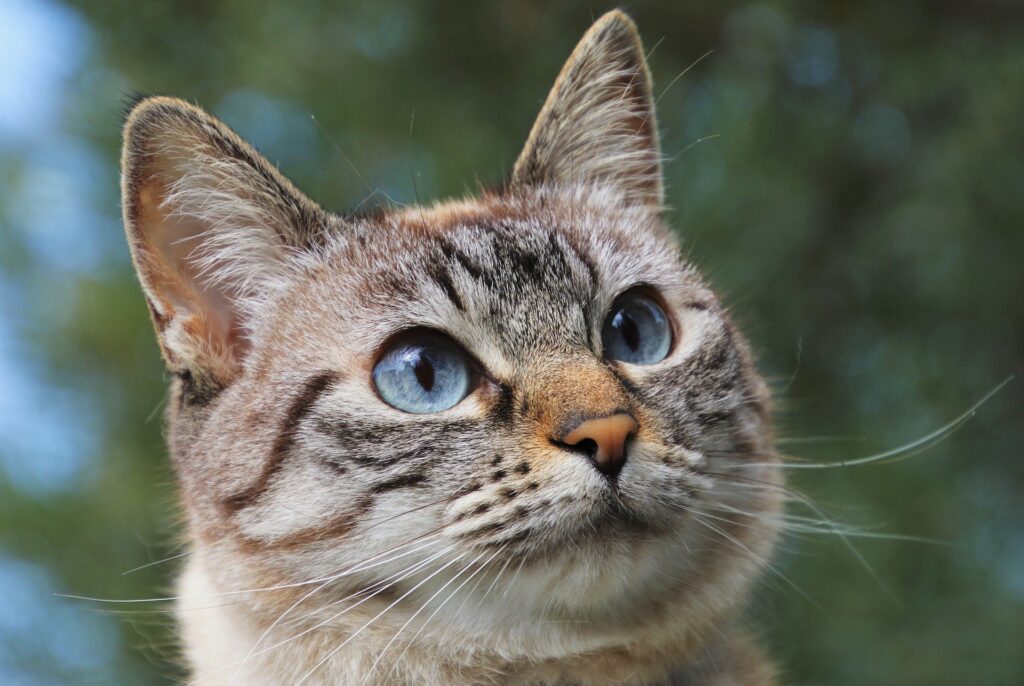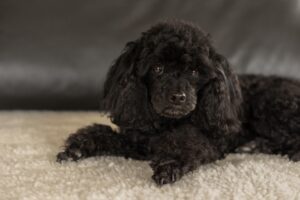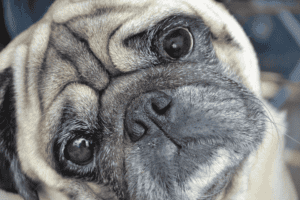Your pet may have clear vision and healthy eyes, but it’s always a good idea to know what common eye problems to watch for. Spotting issues early can lead to early intervention and more effective treatment. Some eye problems in pets can be managed at home with medication, but some are quite serious and can damage your pet’s vision.
Here are some of the most common eye problems we see at Westfield Veterinary Group:
Eye infections – Eye infections in pets can affect the cornea, the conjunctiva, or the inside of the eye itself. They can be caused by bacteria, viruses, or fungus. Common signs are greenish or yellowish eye discharge, squinting, redness, and swelling. We may do an eye stain to check for injury to the cornea. Treatment usually consists of eye drops to heal infection and to reduce inflammation and pain.
Cherry eye – Cherry eye is the displacement (prolapse) of the tear gland on a dog’s third eyelid. It occurs most often in English Bulldogs, Mastiffs, Pugs, and Newfoundlands. The dog’s tear gland moves from behind the third eyelid and becomes inflamed and swollen, forming a ball of tissue that blocks the inside of their eye. In some cases, an anti-inflammatory eye drop can help the gland move back to its normal position. However, surgery is frequently necessary to permanently treat the problem.
Glaucoma – Glaucoma is increased pressure inside the eye, and can cause vision loss. Normally, fluid flows in and out of the eye to maintain pressure. With glaucoma, either too much fluid going in or a drainage problem causes pressure to build. Signs include increased lethargy, different sized pupils, cloudy corneas, and excessive blinking or squinting. If caught early, increased pressure can be controlled with eye drops. If pressure cannot be controlled, surgery will be recommended.
Conjunctivitis (Pink Eye) – Conjunctivitis is the inflammation of the conjunctiva, the moist, pink, lining of the eye and inside of the eyelid. Conjunctivitis may be present if your pet is squinting or holding their eye closed, if the lining of the eye is red and inflamed, or if there is green or yellow discharge. Conjunctivitis is most commonly caused by a virus or allergies and can be treated with eye drops.
Cataracts – When dogs have cataracts, the eye appears cloudy because the lens inside the eye has lost its transparency. Cataracts can be an inherited condition, be the result of a disease, such as diabetes, or be a sign of aging. The lens can rupture and cause inflammation, so it’s important to have cataracts evaluated by a veterinarian in the early stages. In some cases, cataracts can cause vision loss. Surgery with a board-certified veterinary ophthalmologist may be a good option for these dogs.
Retinal disease – Your pet’s retina is the structure at the back of the eye. It contains rods and cones that absorb light and send information to the brain, allowing your pet to see. All diseases of the retina cause blindness. There are inherited retinal diseases, but other diseases can also cause the retina to be affected. Some of these diseases include high blood pressure, distemper virus, fungal infections, glaucoma, ivermectin toxicity, and SARDS (sudden acute retinal detachment syndrome).
Corneal ulcers – A corneal ulcer is a scratch or injury on the surface of the dog’s eye. Corneal ulcers are very painful, and your pet will squint and may try to paw at the eye due to discomfort. Ulcers need to be treated right away or they may cause scarring or rupture the eye, causing vision loss.
Dry eye (Keratoconjunctivitis Sicca) – Dry eye is caused by decreased tear production due to disease or exposure. Some brachycephalic breeds such as Pugs, Boxers, and Boston Terriers are more susceptible if they do not close their eyelids completely. Dry eye causes red and inflamed eyes, and requires lifelong eye drop therapy to reduce inflammation and stimulate or replace tears.
Watery eyes – Many dogs have watery eyes with or without staining on their face where the tears run. Some breeds, like Poodles, are more susceptible to this. This condition may be caused by allergies or by a blockage of the nasolacrimal duct. If you notice acute watery eyes in your pet, it’s best to have them seen by a veterinarian to determine if there might be a more serious underlying condition.
Entropion – Entropion is a hereditary eyelid abnormality that causes the eyelid to fold inward onto the cornea of the eye. When this happens, the eyelashes or hairs on the inside of the eye can rub against the cornea, causing ulcers. Signs of entropion can be squinting and excessive tearing. This condition normally requires surgery to repair. Breeds most commonly affected include Bulldogs, Shih Tzus, and Yorkshire Terriers.
Eyelid tumors – If you notice a bump on your dog’s eyelid, it should be checked by a veterinarian. Many times these common growths are not cancerous, and can be easily managed at home unless they are interfering with your dog’s vision or causing damage to the eye.
While you can’t always prevent an eye problem, there are things you can do to keep your pet’s eyes healthy and injury-free. Keep a close watch on your pet’s eyes, have them seen by your veterinarian regularly for wellness care, and keep their toenails short to prevent injuries from scratching. You can also keep hair around their eyes short, gently clean their eyes during a bath, and prevent them from hanging their head out the window of a moving car, to reduce inflammation and injury.
No matter what eye condition your pet may experience, your pet’s team at Westfield Veterinary Group is ready to help. Give us a call with any questions or concerns about your pet’s eye health.




